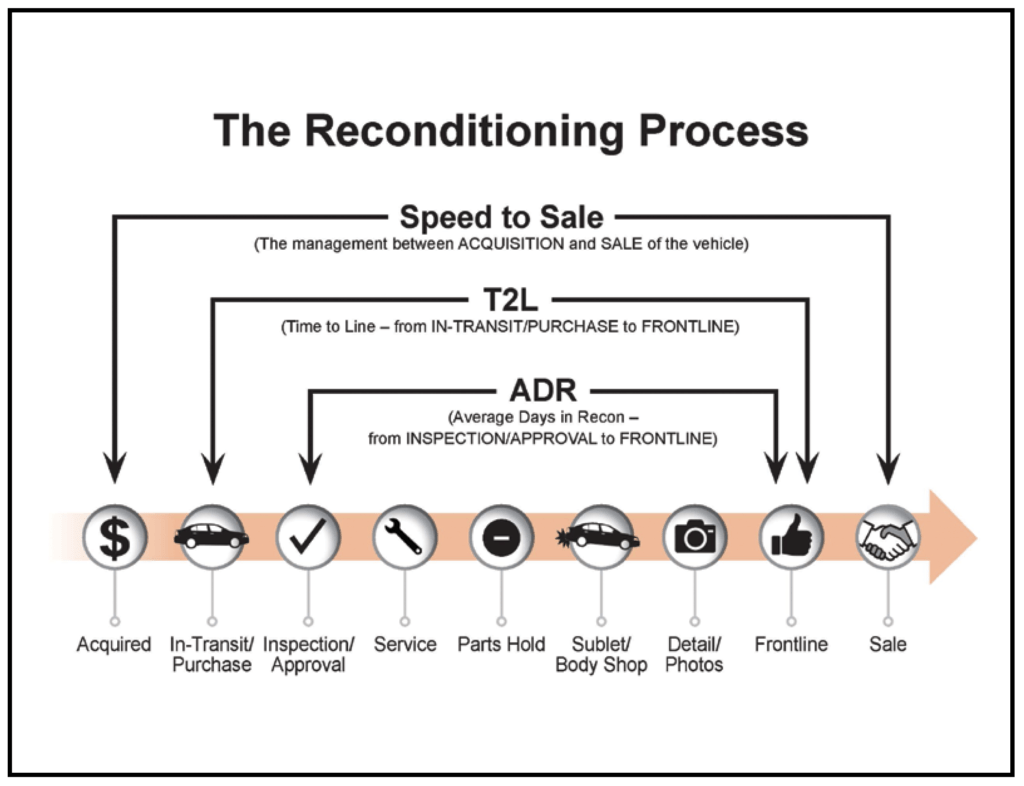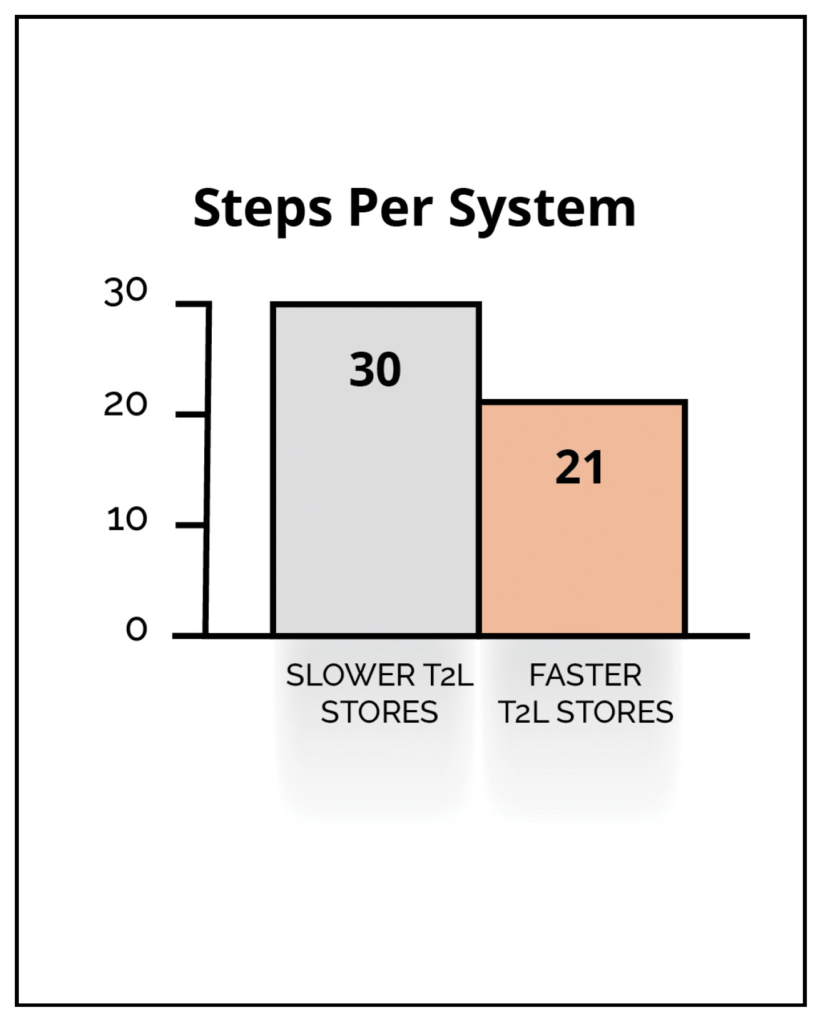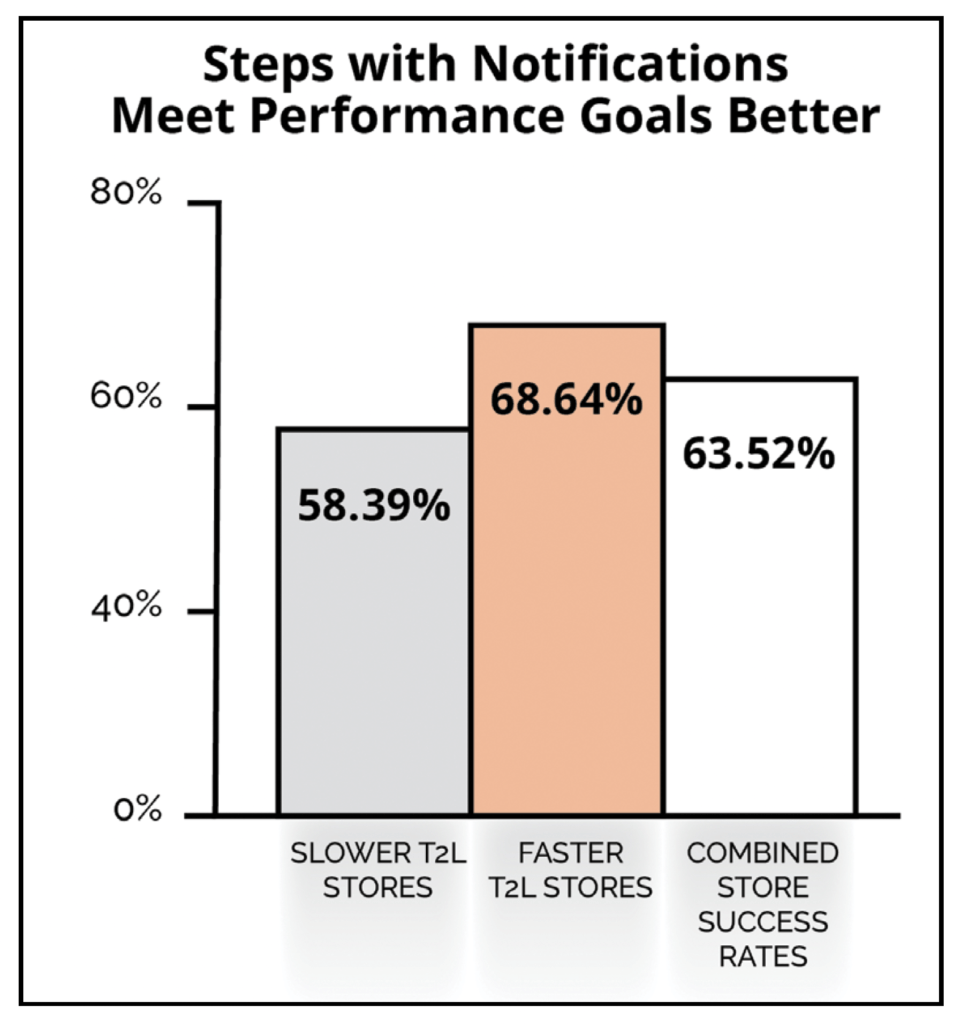By Dustin Jones
If you manage a reconditioning operation, how you structure the flow of cars through that process makes a significant difference in recon’s contribution to sales.
The objective here is to get used cars to sale-ready quality status quicker and to sell more of your vehicles within the first 30 days you own them. Used car experts say that the window is now closer to 14 days! Know that dealers consistently meeting these objectives have achieved a recon time-to-line turn of three to five days.
These principles apply to both manually operated and software-based reconditioning. Either system works best where the workflow is structured by well-defined action steps. This article looks at the importance of these steps and why.

• The number of steps the dealership has designed into its recon workflow (whether manual or automatic) directly affects time-to-line speed. Stores that use a few core steps rather than many steps are 74% more likely to achieve time-to-line goals.


Best Practice workflow steps, not necessarily in this order, are the optimum number that works well for most dealerships:
• Purchase/Auction
• Trade not Cleared
• Inspection
• Used Car Manager Approval
• Service Repair
• Parts Hold
• Offsite Sublet
• Body Shop
• Detail
• Photos
• Sale-Ready or
• WholesaleHere are my final thoughts about workflow efficiency and time-to-line speed:
• Have a fast workflow of 10-12 steps. Add any steps needed for loaners, special equipment, or recall.
• Limit the number of critical people engaging with your system. I recommend this group be the internal writer, service manager, detail manager, used car techs, used car manager, and the back parts counter worker.
• Step Notifications should be in place to make sure that the correct person is moving the unit or taking care of the unit’s needs in that step. This individual can then judge step times and identify who ensures that the correct person oversees that step in the workflow.
• Use Work Item details within the steps to track the cost of units. Make sure approved amounts and declined work are recorded. This practice will stop bills that should not have been approved. Work Items reduce Internal expenditures and reveal the gross per-copy to the holding cost per unit.
• Have all detailers on flat rate to reinforce the need for productivity. By doing this, management can also track hours and hours sold per detail. Now you can accurately identify top performers and know with accuracy how many detailers your workflow requires.
• Units waiting for parts should be moved into detail to eliminate parts-waiting downtime. Modern reconditioning structured to meet today’s consumer demand, whatever the market, is sound science and required to be efficient, transparent, and accountable. The system must get cars sale-ready fast to ensure the dealership meets customer demand efficiently and engagingly.